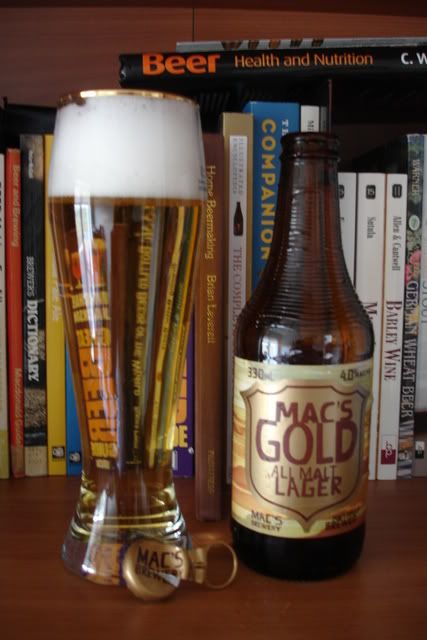 The American brewers are really doing something right with their dark beers. There is a richness and depth of flavour that puts so many other stouts and porters in the shade. Sam Adams Holiday Porter was my last American dark treat. I have The Beer Nut to thank for that, and he similarly steered me towards this one too. The richness of the malt in Sierra Nevada's Stout suggests that it isn't just your run of the mill base malt holding the show together. Much like the Holiday Porter I suspect there is a measure of richer malts such as Vienna or Munich to beef things up a bit. On the nose it has the familiar sharpness of roasted barley and perhaps some other dark grains, but it is only upon a deep satisfying slurp that the hops creep up and bite you. When I brew my own stouts I rarely add any late hop additions because I think that the rich dark grains should run the show, but the hops work very well indeed here and meld perfectly with the roasted grain. It's chewy as hell too, with a wonderful body and smooth dark chocolate texture that makes you wish the glass will never end. American brewers are teaching me so very much about dark beer and just what it can be. In many cases they have gone way over the top in their reinterpretation of classic beer styles, but they can clearly produce superb beer when they don't get too carried away with making classic styles their own.
The American brewers are really doing something right with their dark beers. There is a richness and depth of flavour that puts so many other stouts and porters in the shade. Sam Adams Holiday Porter was my last American dark treat. I have The Beer Nut to thank for that, and he similarly steered me towards this one too. The richness of the malt in Sierra Nevada's Stout suggests that it isn't just your run of the mill base malt holding the show together. Much like the Holiday Porter I suspect there is a measure of richer malts such as Vienna or Munich to beef things up a bit. On the nose it has the familiar sharpness of roasted barley and perhaps some other dark grains, but it is only upon a deep satisfying slurp that the hops creep up and bite you. When I brew my own stouts I rarely add any late hop additions because I think that the rich dark grains should run the show, but the hops work very well indeed here and meld perfectly with the roasted grain. It's chewy as hell too, with a wonderful body and smooth dark chocolate texture that makes you wish the glass will never end. American brewers are teaching me so very much about dark beer and just what it can be. In many cases they have gone way over the top in their reinterpretation of classic beer styles, but they can clearly produce superb beer when they don't get too carried away with making classic styles their own.(I should add that while The Beer Nut's palate for dark beer is finely tuned and essentially flawless, it malfunctions rather badly when the beer is adulterated with nitrogen.)






